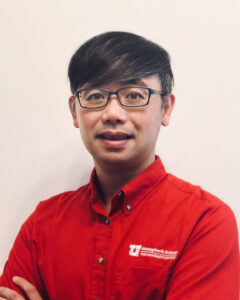Do the Right Thing
Dr. Kevin Perry, an atmospheric scientist at the University of Utah, is one of the scientists working to save the Great Salt Lake from drying up.
The lake needs all the help it can get—informing citizens and policymakers on the science of the lake is critical to keep it going for years to come. Lately, Perry says more of his time is spent communicating about his research than actually doing it.
In 2021, Perry presented the findings of a two-year research project to determine the contents of the dust coming off of the dried Great Salt Lake surface. He found that not only was the dust a source of pollution, but it also released toxic chemicals like arsenic and other heavy metals into the air. The potentially harmful air pollutant would only worsen if the lake wasn’t restored—and he’s been trying to get Utahns to listen ever since.
While Perry was out buying groceries, a cashier struck up a conversation with him about the Great Salt Lake. The cashier said he had created a website to warn community members about dust pollutants coming off the Great Salt Lake and started to explain the risk of the exposed lakebed to Perry.
“I laughed and I said, ‘You don’t know who I am, but you know the toxic dust that you’re talking about? That’s my scientific research,’” Perry says. “That kind of blew me away…when [I saw] somebody who has no scientific background was inspired enough to spend their time and effort trying to save the Great Salt Lake.”
Read the full article in Scientist Stories by Science Friday's Emma Lee Gometz.







